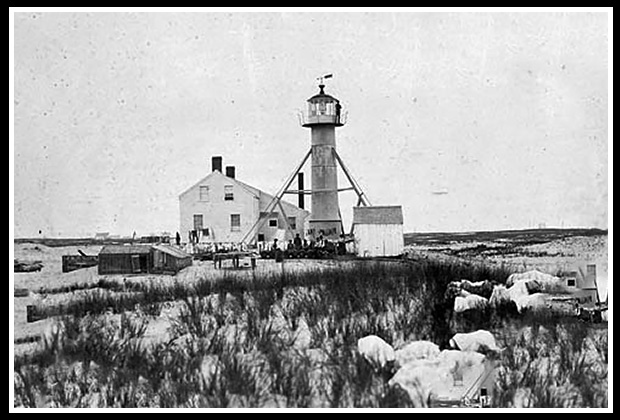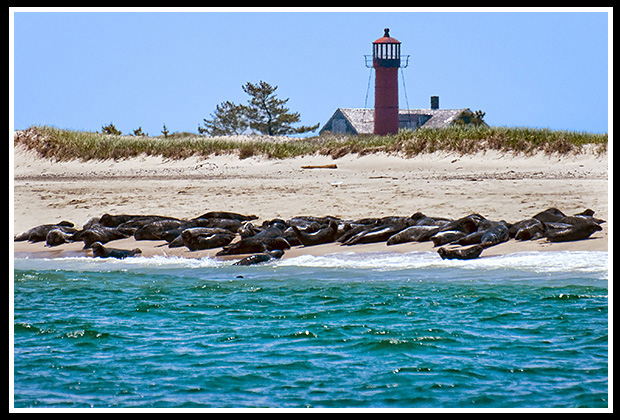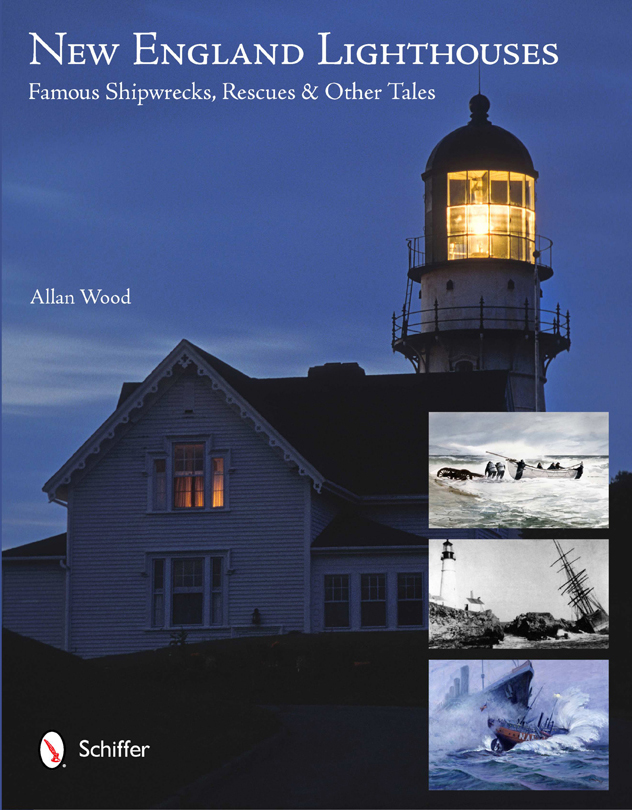Monomoy Point Lighthouse
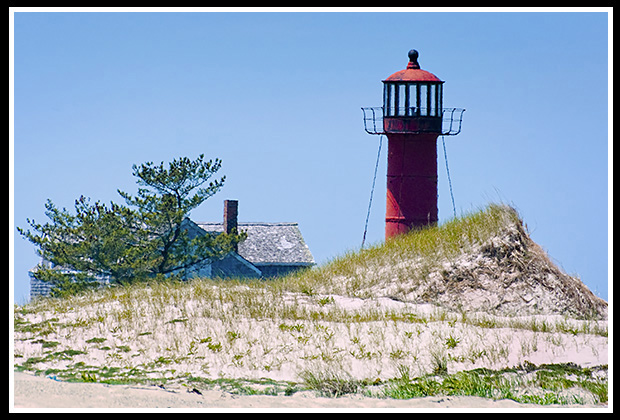
Monomoy Island, Chatham, Massachusetts
Built in 1823
Location:
On Monomoy Island South, on the southernmost tip. Lighthouse is part of Monomoy National Wildlife refuge with limited access to the area during the summer months.
Latitude: 41° 33' 33" N
Longitude: 69° 59' 38" W
Historic Stories:
Native people are believed to have inhabited the Monomoy peninsula 6,000 to 8,000 years ago.
The shoals around Monomoy Island are some of the worst in New England claiming many ships. Pollock Rip, an area of unusually strong tidal currents located off the southern shore of the island, historically caused numerous shipwrecks causing the need for a light station to be built to mark the area.
| In 1823, Monomoy Light, the 40-foot, cast-iron tower lined in brick was built. |
Early Monomoy Light |
Its primary purpose for helping to guide shipping traffic and mariners around the constantly shifting sandbars and shoals caused by those strong tidal currents at the end of Monomoy peninsula. Although Monomoy Light was in a very isolated location, there was an abundance of local food for the keepers.
One keeper converted his Model T Ford into what may be considered the ancestor of the early Dune Buggy of the 1970’s.
The most well known shipwreck on the sandbanks was William Vanderbilt's 285-feet long Luxury Yacht, the Alva, in the summer morning of July of 1882 when they encountered dense fog and anchored the boat offshore to wait for the fog to clear. The 300-feet long freight steamer, H. F. Dimock, also caught in the fog, crashed into the yacht and destroyed it. Luckily no lives were lost as the crew of the Dimock rescued everyone on the yacht.
The Heroic Efforts of the Monomoy Lifesavers
Ends in Tragedy
Sometimes mistakes occur in communication between stations and boats, or panic ensues when those that are being rescued become too frightened, ending up in tragic situations. One of the worst disasters in the history of the Life Saving Service occurred on March 17, 1902, off the southern end of Monomoy Island, on the dangerous shoal called the Shovelful Shoal located near Monomoy Point Lighthouse. This tragic event involved the senseless drowning of 12 persons, seven of whom were members of the crew of the Monomoy Life Saving Station, located two miles north of the lighthouse.
Two coal barges, the Wadena and the Fitzpatrick grounded on the shoal about a mile from one another during a gale storm on March 11, 1902. The next days, the crews of each ship were removed and wreckers were employed to remove the cargo and any other heavy items in order allow both ships to float off the shoal.
As another storm approached, on March 17,1902, Keeper Eldridge and his Monomoy Lifesavers responded to a distress signal observed from the barge Wadena. The workers from the stranded vessel panicked during the difficult rescue when a giant wave filled the surfboat with water from the high seas. The lifeboat capsized over the icy waters, and caused the tragic loss of life for all five men of the Wadena, and for seven of the eight members of the Monomoy life saving crew. One lifesaver, Seth Ellis, was rescued by the wrecker captain of the barge Fitzpatrick, Captain Elmer Mayo, who risked his own life using a little dory. The event has been known as the "Monomoy Disaster".
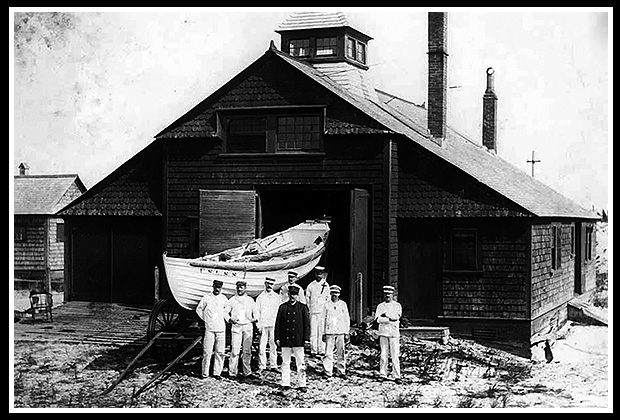
Momomoy Lifesaving Crew
Courtesy US Coast Guard
Note: For more details about this famous story, or about the heroic efforts of lifesavers known as surfmen, select the apropriate link at the top of the page to be directed to my Lighthouse Stories section.
When the Cape Cod Canal was completed in 1914, it diverted much of the shipping traffic away from Nantucket Sound, and caused the lighthouse to be dismantled in 1923. Beforehand, Monomoy was on the most convenient route for ships to reach southern New England. For a time afterwards in mid 1900’s, the Navy used the island for target practice. Luckily the buildings were not seriously damaged.
In 1964 the Massachusetts Audubon Society helped to restore the lighthouse and its buildings.
The Blizzard of 1978 cut the island in half and is now named as Monomoy North and Monomoy South. The area today is managed as a wildlife sanctuary.
Places to Visit Nearby:
Chatham provides a quiet and enjoyable environment for visitors to the cape. You can visit the Chatham Lighthouse and relax at nearby Chatham Beach. You can access the Monomoy Refuge Center through Chatham.
For those visitors who enjoy a somewhat strenuous hike, the Monomoy Island Ferry will provide narrated wildlife tours that will drop visitors off to make the hike to the lighthouse and explore the Monomoy National Wildlife Refuge. For those who are not interested in hiking and looking to get a decent view from the water, take the Monomoy Island Excursions wildlife tour. Sometimes, during the summer months, it may be possible to spend the night in the keeper's house with permission from the Friends of Monomoy. For the heroic hikers, you can now hike the 15 mile trek along the entire Monomoy island during low tide from Chatham to the lighthouse.
Seals resting on the beach in front of the lighthouse. |
Monomoy is one of eight national wildlife refuges comprising the Eastern Massachusetts National Wildlife Refuge Complex. |
These eight ecologically diverse national wildlife refuges in eastern Massachusetts include Assabet River National Wildlife Refuge, Great Meadows Wildlife Refuge, Massasoit Wildlife Refuge, Mashpee Wildlife Refuge, Monomoy Wildlife Refuge, Nantucket Wildlife Refuge, Nomans Land Island Wildlife Refuge, and Oxbow National Wildlife Refuge.
The Morris Island Hiking Trail nearby offers a small sampling of the unique wildlife of the Monomoy Islands and is the only section of Monomoy National Wildlife Refuge accessible by land.
The Audubon Society of Wellfleet offers a variety of educational programs, and occasional guided tours of Wellfleet Bay Wildlife Sanctuary, Monomoy Wildlife Refuge, and the Cape Cod National Seashore.
Visit the Cape Cod Museum of Natural History in Brewster, with 80 acres of conservation land with exhibits, nature trails, archaeology, and other events.
Directions to Monomoy Wildlife Refuge
and Visitor Center:
- To reach the refuge headquarters and visitor center on Morris Island, take U.S. Route 6 east to State Route 137 south to State Route 28.
- Take Route 28 east to the rotary in the center of Chatham.
- From the rotary take Main Street, up the hill to a T-intersection.
- Turn right and proceed past the Chatham Lighthouse and Coast Guard Station.
- Bear left after the lighthouse onto Morris Island Road, then take the first right.
- Follow Morris Island Road to signs for the refuge on the left.
Contact Info:
Monomoy National Wildlife Refuge
Friends of Monomoy
Chatham, Massachusetts 02633
Phone: (508) 945-0594
Cape Cod Museum of Natural History
869 Route 6A
Brewster, MA 02631
Phone: (508) 896-3867
E-mail: info@ccmnh.org
Local Boat Tours
Both vessels offer specific lighthouse cruises to see Monomoy Light from the water.
Monomoy Island Excursions
They offer wildlife refuge tours that pass by the Monomoy Point Lighthouse (see photo at top). They also offer wildlife and lighthouse tours around Chatham Lighthouse and Stage Harbor Lighthouse, and ferry passengers to Nantucket Island.
702 Main Street
Route 28
Harwich Port, Massachusetts 02646
(508) 430-7772
Email: monomoy2@verizon.net
Monomoy Island Ferry
Wildlife refuge tours visit the Monomoy Point Lighthouse, minimum 6 passengers.
(508) 945-5450
KeithLincoln@comcast.net
Books to Explore
New England's Haunted Lighthouses: 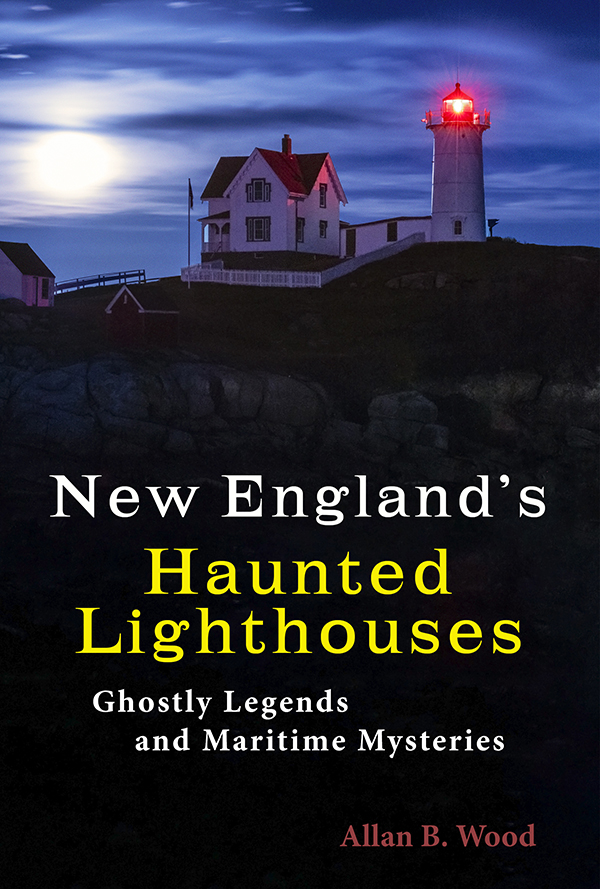
Available in paperback. |
In this image-rich book, discover the historical mysteries surrounding the haunted lighthouses of New England along its treacherous coastline! Reliable witnesses have reported numerous ghostly encounters, including the spirits of dedicated keepers who refuse to leave, phantom ships, victims of misfortune, restless souls from nearby shipwrecks, and more. Immerse yourself in the tales connected to these iconic landmarks, blending maritime history with the paranormal. |
Lighthouses and Coastal Attractions of Southern New England: Providing special stories from each of the 92 lighthouses on the southern coast, along with plenty of indoor and outdoor coastal attractions and tours you can explore. There are stories from each lighthouse in the Cape Cod region. Look inside! |
|
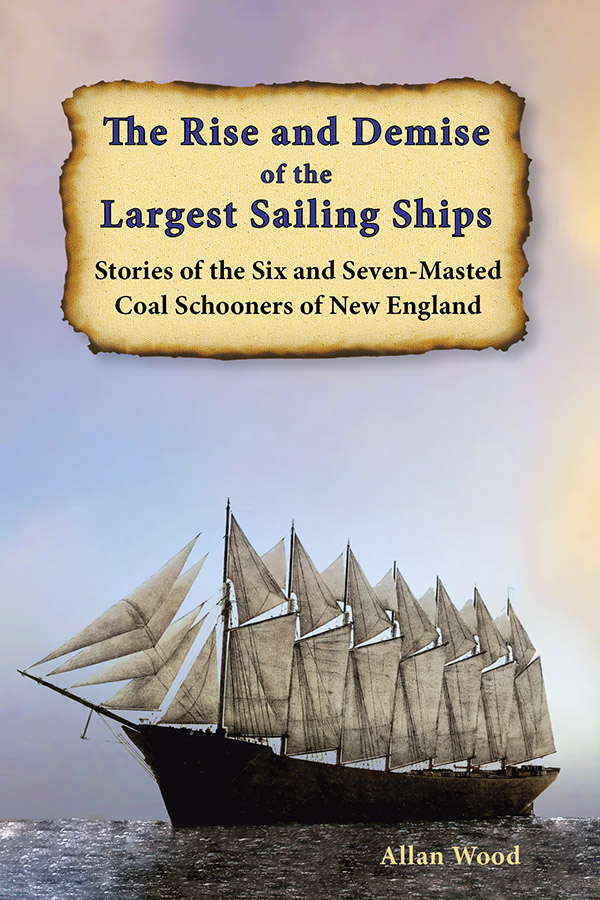
Available in paperback, hardcover, and as an eBook for all devices. |
The Rise and Demise of the Largest Sailing Ships: In the early 1900s, New England shipbuilders constructed the world’s largest sailing ships amid social and political reforms. This book brings to life the many challenges these eleven magnificent vessels faced in an era of positive social and political changes. It provides the historical accounts that followed each ship, like competitions, battling devastating storms, acts of heroism, tragedies, and their final voyages. In fact, the largest of these six-masters, the Wyoming, got caught in a terrible storm and sank off Monomoy Island. |
| New England Lighthouses: Famous Shipwrecks, Rescues & Other Tales This image-rich book contains over 50 stories of famous shipwrecks and rescues around New England lighthouses, and also tales of hauntings. You'll find more details and imagery in the story of the Monomoy Lifesavers and the tragedy they faced when trying to rescue the men on the Wadena as mentioned above. |
You'll find this book and my lighthouse tourism books from the publisher Schiffer Books, or in many fine bookstores like Barnes and Noble.

